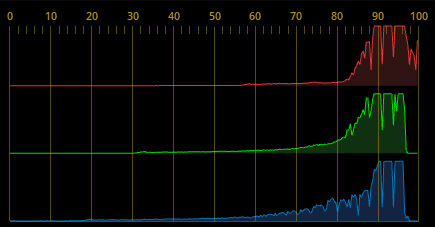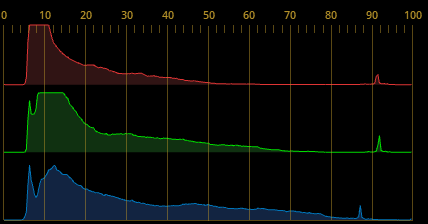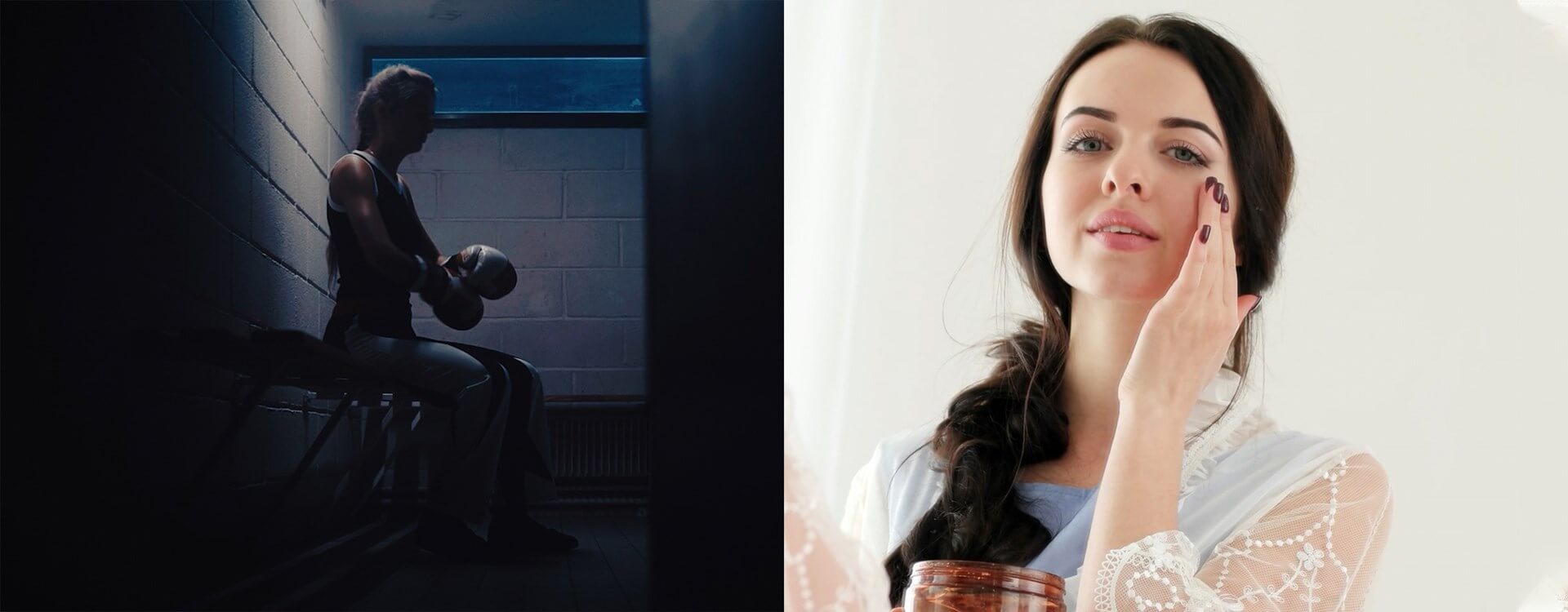Highlights
Table of Contents
Explore article topics
What’s the difference between high key and low key lighting? What do these lighting techniques bring to your filmmaking? When should you use high key vs. low key lighting? And how do you create them? If you’ve ever wondered anything about high key or low key lighting, we’re here for you. We’ll explain how to recognize a high key vs. a low key scene, when you should make use of high key or low key lighting setups, and how to go about doing it.
What is high key lighting?
High key lighting describes a setup where the tones in your scene are predominantly white and very light. A high key-lit scene will be bright with very few midtones and almost no blacks in it at all. There will be some blacks, for example, the pupils of people’s eyes, but not many. Anything that is usually in the midtones will show up as lighter than normal. Take a look at the histogram of a scene shot with high key lighting, and the data will be positioned almost entirely toward the right.

Low contrast lighting, with minimal shadows, defines high key scenes. You will not see much of a transition from light to dark because the scene is mostly lights and whites, with very few darks. If you were to describe the quality of light in a high key scene, it would be soft, enveloping and free from shadows.
When you expose for high key lighting in film, don’t be afraid of the very brightest areas of the scene being completely washed-out. And it’s not a failing to have some midtones and backs, too. But the overwhelming sense should be of intense lightness.
When to use of high key lighting
This intensely light, very bright setting has a feeling of positivity and airiness. Low-contrast lighting is usually associated with a romantic look but is also good for filming children or videos aimed at children. It’s also recommended for food videos, advertisements and anything associated with health, fitness or beauty. High key lighting in film will give everything you shoot a bright and bouncy feeling.
What is low key lighting?
As you might have guessed from the name, low key lighting is the opposite of high key lighting. Low key-lit scenes are tonally very muted and feature lots of blacks, darks and shadows. There will not be many midtones in a scene with low key lighting. What you are looking at here is high contrast lighting. Whatever you use to bring light to the scene will form a very stark contrast with the predominant darks and shadows.
A histogram from a scene shot with low key light will have its data concentrated toward the left of the graph.

When to use low key lighting
The darkness that low key lighting brings to a scene can be used with a variety of interpretations. The most obvious feelings that it conveys are probably fear, intimidation or menace. When things are dark and shadowy, they are scary. But, low key light can also convey a more subdued tone, so it does not necessarily suggest foreboding, rather melancholy or contemplation.
You can also use low key lite romantically or alluringly. It’s a useful means of leaving more to your viewers’ imaginations than you might want to reveal on a screen. Low key doesn’t have to be reserved for impending disaster or terror. Campfires can be atmospheric and fun, and candles or fairy lights have an air of romance about them.
How to create high key lighting
It’s best to keep everything in a high key shoot light and bright. You want light backgrounds, light clothing and light props.
Inevitably, high key lighting requires a lot of light. Having a good knowledge of the 3-point lighting setup is a solid starting point, one of the recommended setups for lighting YouTube videos.
When you set up your lights for a high key scene, think ‘shadowless.’ You will need a huge softbox as your key light that produces lots of soft, even light with as few shadows as possible. Some people recommend positioning it directly above your camera, others at 30 degrees to it. You get to decide what you prefer here, and remember, it’s not a case of choosing one and sticking with it for every high key scene that you ever shoot. You can change it depending on what and who you are shooting and the look you are trying to achieve.
Next, you will need at least one fill light to help counteract any shadows created by the key light. A reflector or two can be very useful, as well.
Finally, you will need to light the background. Two lights are best. White light is a solid starting place, but washing the background in pastel tones can help create a mood in your video, too.
Get unlimited royalty-free 4K footage
How to create low key lighting
There can be a bit of stigma around low key lighting with the assumption that it’s just badly lit or underexposed. This isn’t true. Low key light and underexposure are different things. Low key lighting in film should bring a distinct feeling to a piece: high contrast lighting.
When it comes to low key vs. high key lighting setups, the difference is in the number of lights you need. We have outlined some recommended lighting setups for YouTube videos here, but for low key, you can get away with one very carefully positioned light in your scene. Avoid spilling any light onto your background, and if you can, make sure the background is dark, too. In some circumstances, ambient light will be exactly what you need.
Conclusion
To wrap up, high key vs. low key lighting is low contrast vs. high contrast lighting. High key will give an optimistic and upbeat feeling to a film. Low key, on the other hand, is much more subdued. It might be menacing, or it could be contemplative. When it comes to gear, you can create an effective low key lighting setup with very few light sources or small LED lights. A high key-lit scene, on the other hand, will require much more gear. However, it doesn’t matter whether you choose high key or low key lighting in your plan. It’s whatever is best for your storytelling.
Daniela is a writer and editor based in the UK. Since 2010 she has focused on the photography sector. In this time, she has written three books and contributed to many more, served as the editor for two websites, written thousands of articles for numerous publications, both in print and online and runs the Photocritic Photography School.
Share this article
Did you find this article useful?
Related Posts
Latest Posts
- 25 Apr
- By Josh Edwards
- 4 MIN READ
